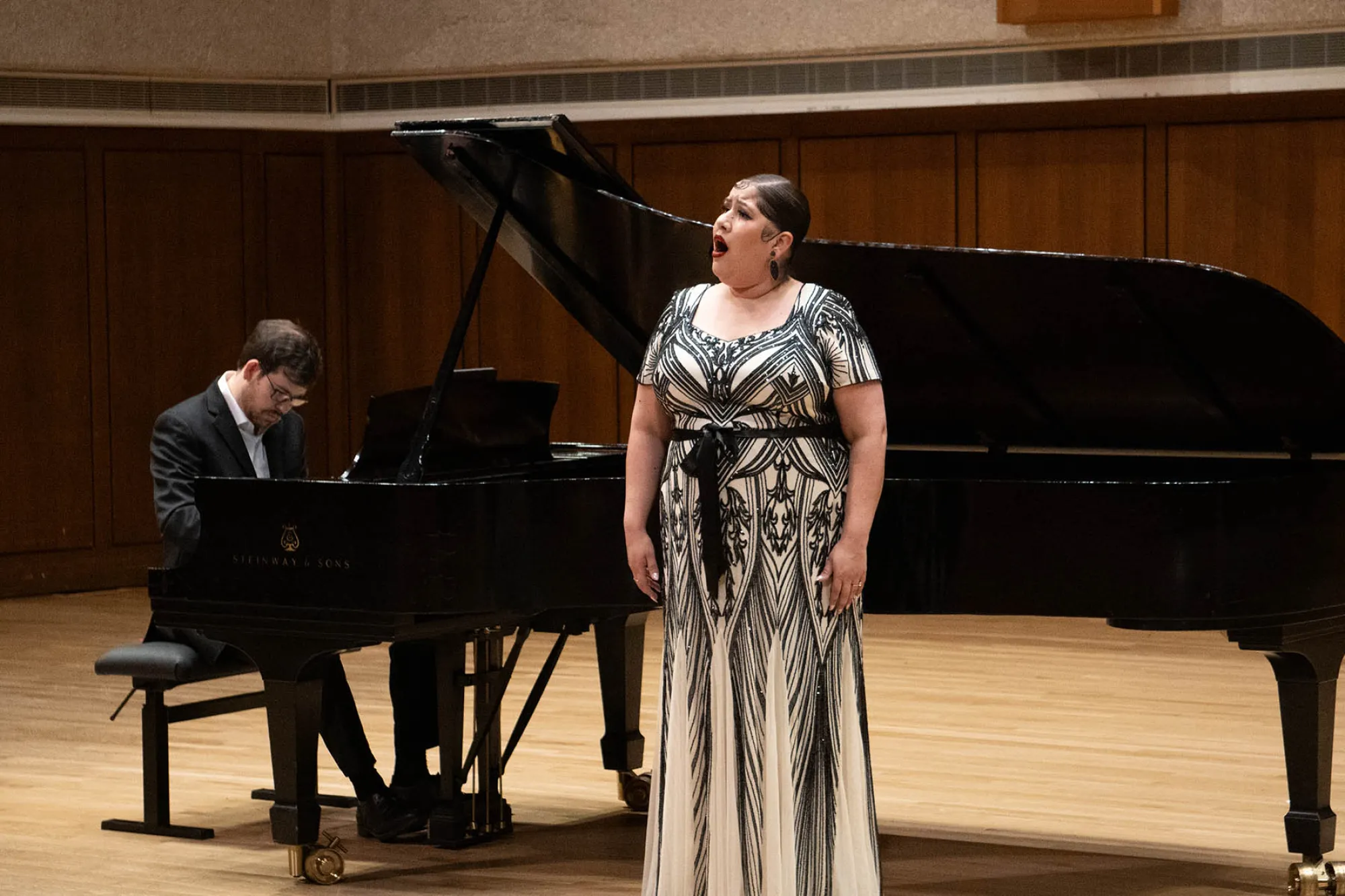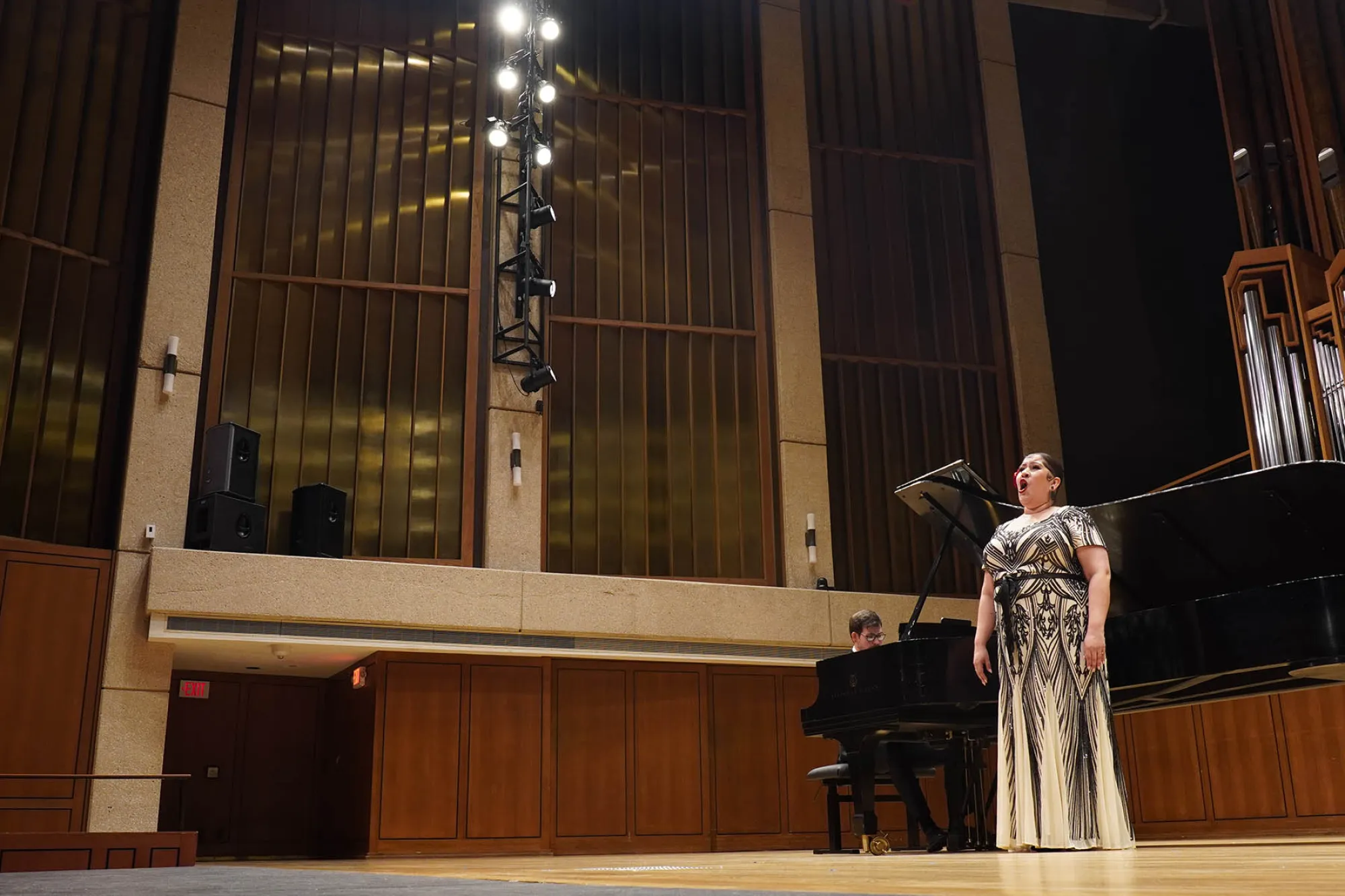September 26, 2024

It is never easy to be first. While everyone else was just returning to campus, soprano Liliana Guerrero and pianist James Maveric were already polishing off the final touches of their recital. Their program, "Canciones de Latinoamérica: Celebrating Hispanic Heritage Month," truly embraced all the sounds and feelings one would associate with a Hispanic heritage concert, featuring composers from Mexico, Argentina, Colombia, and Cuba.
The first thing the audience noticed when Liliana Guerrero took the stage was her gorgeous dress. It was entirely black and white, with a touch of Art Deco flair reminiscent of styles popular in Havana or Mexico City during the Roaring Twenties. When asked about her dress, she revealed that it did not come from Havana or Mexico City but rather from the "clearance rack at Dillard’s," which she described as a great place to buy recital dresses “because they have all the stuff students didn’t want to wear to prom.”
This concert was a true passion project for Liliana, reflecting her heritage. “One of my main passions is disseminating this repertoire. What I hear most after these concerts is, ‘I didn’t know this existed before,’” she recalled. She went on to express how much easier it is to sing in her native language and the joy she feels when people ask about the songs and how to learn more about them.
The concert showcased a rich tapestry of music from a diverse selection of composers. The evening began with "Escúchame" from Florencia en el Amazonas by Daniel Catán. This opera was the first Spanish-language work commissioned by American opera houses, a collaboration between the Houston Grand Opera, Los Angeles Opera, and Seattle Opera. With a libretto by Marcela Fuentes-Berain, it tells the story of the reclusive opera singer Florencia Grimaldi, who travels incognito into the Amazon.
Next was Alberto Ginastera's "Cinco canciones populares Argentinas," which draws from traditional folk melodies but is presented in a non-traditional style. These pieces emerged as a form of protest against the conservative government of the time, resulting in Ginastera losing his teaching position.

Jamie León's selections, including "Rima," "A ti," "La casa del Lucero," and "Algún día," exemplify his fusion of Colombian heritage with American jazz and musical theater. This was followed by Ernesto Lecuona who contributed to the program with "Por eso te quiero," "Noche azul," and "Siboney," songs that became synonymous with the Cuban music craze of the 1930s and '40s. Born in Havana, Lecuona’s compositions are rich in Afro-Cuban rhythms and feature lush harmonies and sonorous accompaniments.
The concert also included "Cuando vuelva a tu lado," "Te quiero, dijiste," and "Júrame" by María Grever. Grever, who built her career in Mexico, made the bold move to New York City with her two children in 1916. She began performing there, though she initially did not play her own compositions. Her breakthrough came in 1926 when G. Schirmer published her bolero "Júrame," which was recorded by tenor José Mojica the following year, making Grever a household name. Over her career, she penned more than 800 songs, many of which were featured in films and performed by major artists, including Bing Crosby’s rendition of "Cuando vuelva a tu lado."

Lastly, "Salida de Cecilia" from Cecilia Valdés by Gonzalo Roig, a prominent figure in Cuban music, concluded the program. Roig founded both Havana’s National Opera and its Philharmonic Orchestra, leaving a lasting legacy in the world of music.
When asked about her favorite part of the concert, she struggled to pinpoint a single moment or song. “It’s so hard to say because I like all of them for different reasons,” she said.

